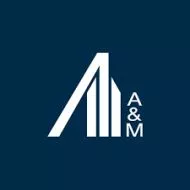- within Finance and Banking topic(s)
- with Finance and Tax Executives
- in United Kingdom
- with readers working within the Healthcare industries
- Lending momentum continues with 5.0% quarter-on-quarter (QoQ) growth in net loans, while deposit growth slows to 2.8%
- Operating income increases 3.9% QoQ; cost-to-income ratio improves to 27.5%
- Asset quality remains strong, but cost of risk rises to 0.51% amid higher impairments
- Sector-wide return on equity (RoE) improves to 18.9%; net interest margin (NIM) declines by 9 basis points to 2.43%
Dubai – 26th September, 2025 – Leading global professional services firm Alvarez & Marsal (A&M) has released its latest edition of the United Arab Emirates (UAE) Banking Pulse, analyzing the Q2 performance of the country's ten largest listed banks. The quarter was characterized by sustained lending momentum, improving operating income, and stronger cost efficiency despite a rise in impairment charges.
Aggregate net loans and advances (L&A) rose 5.0% QoQ, while deposit growth slowed to 2.8% QoQ, leading to a 156bps increase in the loan-to-deposit ratio (LDR) to 76.2%. Operating income increased by 3.9% QoQ, driven by 1.3% QoQ growth in net interest income (NII) and an 8.7% QoQ rise in non-interest income. Net income rose marginally by 0.2% QoQ to AED 22.2 billion, as higher provisions offset revenue gains. The cost-to-income (C/I) ratio improved by 64bps to 27.5%, while the cost of risk (CoR) increased by 22bps to 0.51%. Return on equity (RoE) rose to 18.9%, while return on assets (RoA) declined slightly to 2.0%. The net interest margin (NIM) contracted by 9bps to 2.43%, despite stable yield on credit (YoC) and cost of funds (CoF) at 10.9% and 3.9%, respectively.
The report analyses the top ten UAE banks by asset size: First Abu Dhabi Bank (FAB), Emirates NBD (ENBD), Abu Dhabi Commercial Bank (ADCB), Dubai Islamic Bank (DIB), Mashreq Bank (MASQ), Abu Dhabi Islamic Bank (ADIB), Commercial Bank of Dubai (CBD), National Bank of Fujairah (NBF), National Bank of Ras Al-Khaimah (RAK), and Sharjah Islamic Bank (SIB).
Mr. Sam Gidoomal, Managing Director and Head of Middle East Financial Services, noted: "Strong earnings resilience and capital strength continue to support UAE banks' position in regional markets. Share price performance has remained solid, with institutions trading at a premium to historical valuation multiples. This reflects investor confidence in the sector's fundamentals, especially as banks look ahead to opportunities in M&A, higher dividend payouts, and regional expansion."
Prevailing Trends Identified for Q2 2025
- Credit growth continued to outpace deposits. Net loans and advances increased by 5.0% quarter-on-quarter (QoQ), while deposits rose by 2.8% QoQ, resulting in a 156-basis point (bps) increase in the loan-to-deposit ratio (LDR) to 76.2%.
- Operating income expanded as revenue streams strengthened. Aggregate operating income grew by 3.9% QoQ, supported by a 1.3% QoQ increase in net interest income (NII) and a 19.0% QoQ rise in other operating income.
- Net interest margin (NIM) declined by 9bps QoQ to 2.43%, despite stable yield on credit (YoC) at 10.9% and cost of funds (CoF) at 3.9%, as larger banks weighed on sector averages.
- Cost efficiency continued to improve. The cost-to-income (C/I) ratio declined by 64bps QoQ to 27.5%, as revenue growth outpaced the 1.6% QoQ increase in operating expenses.
- Risk costs rose, though asset quality remained strong. The cost of risk (CoR) increased by 22bps QoQ to 0.51%, but the coverage ratio improved by 99bps QoQ to 111.1%, and the non-performing loan (NPL) ratio declined to 2.9%.
- Profitability metrics remained solid. Return on equity (RoE) improved by 36bps QoQ to 18.9%, while return on assets (RoA) declined slightly by 9bps QoQ to 2.0%.
- Return on risk-weighted assets (RoRWA) declined by 13bps QoQ to 3.2%, while the capital adequacy ratio (CAR) decreased by 108bps to 15.5%, reflecting balance sheet growth and higher risk weights.
OVERVIEW
The table below sets out the key metrics:
| CATEGORY | METRIC | Q1 2025 | Q2 2025 |
|---|---|---|---|
| Size | Loans and Advances Growth (QoQ) | 3.6% | 5.0% |
| Deposits Growth (QoQ) | 5.8% | 2.8% | |
| Liquidity | Loan-to-Deposit Ratio (LDR) | 74.7% | 76.2% |
| Income & Operating Efficiency | Operating Income Growth (QoQ) | -0.2% QoQ | 3.9% QoQ |
| Operating Income / Assets | 3.7% | 3.9% | |
| Non-Interest Income / Operating Income | 35.7 % | 36.7% | |
| Yield on Credit (YoC) | 10.9% | 10.9% | |
| Cost of Funds (CoF) | 3.9% | 3.9% | |
| Net Interest Margin (NIM) | 2.52% | 2.43% | |
| Cost-to-Income Ratio (C/I) | 28.2 % | 27.5% | |
| Risk | Coverage Ratio | 110.5% | 111.1% |
| Cost of Risk (CoR) | 0.29% | 0.51% | |
| Profitability | Return on Equity (RoE) | 18.6% | 18.9% |
| Return on Assets (RoA) | 2.1 % | 2.0% | |
| Return on Risk-Weighted Assets (RoRWA) | 3.3% | 3.2% | |
| Capital | Capital Adequacy Ratio (CAR) | 16.6% | 15.5% |
Sources: financial statements, investor presentations, A&M analysis
Mr. Asad Ahmed, A&M Managing Director, Financial Services commented: "UAE banks delivered a steady performance in Q2 2025, with strong credit growth, stable income, and continued cost efficiency gains. While margin compression and higher impairment charges added pressure, the sector's underlying fundamentals remain sound, with banks demonstrating discipline and adaptability in a shifting rate environment".
Methodology:
Alvarez & Marsal's UAE Banking Pulse examines the quarterly performance of the 10 largest listed banks in the UAE, based on total assets. The Q1 2025 edition compares key performance indicators against full-year FY 2024 results, offering insights into how momentum and metrics are evolving into the new year.
The analysis is based on 16 distinct metrics grouped into five performance categories: size, liquidity, income & efficiency, risk, and profitability. These include growth in loans and deposits, cost-to-income ratios, yield on credit, net interest margins, cost of risk, and return ratios. All data is sourced from publicly available financial statements and investor presentations.
The country's 10 largest listed banks analyzed in A&M's UAE Banking Pulse are First Abu Dhabi Bank (FAB), Emirates NBD (ENBD), Abu Dhabi Commercial Bank (ADCB), Dubai Islamic Bank (DIB), Mashreq Bank (Mashreq), Abu Dhabi Islamic Bank (ADIB), Commercial Bank of Dubai (CBD), National Bank of Fujairah (NBF), National Bank of Ras Al-Khaimah (RAK) and Sharjah Islamic Bank (SIB).
This report also incorporates qualitative developments including M&A activity, digital transformation initiatives, and regulatory updates that shape the strategic landscape for UAE banks.
The content of this article is intended to provide a general guide to the subject matter. Specialist advice should be sought about your specific circumstances.




